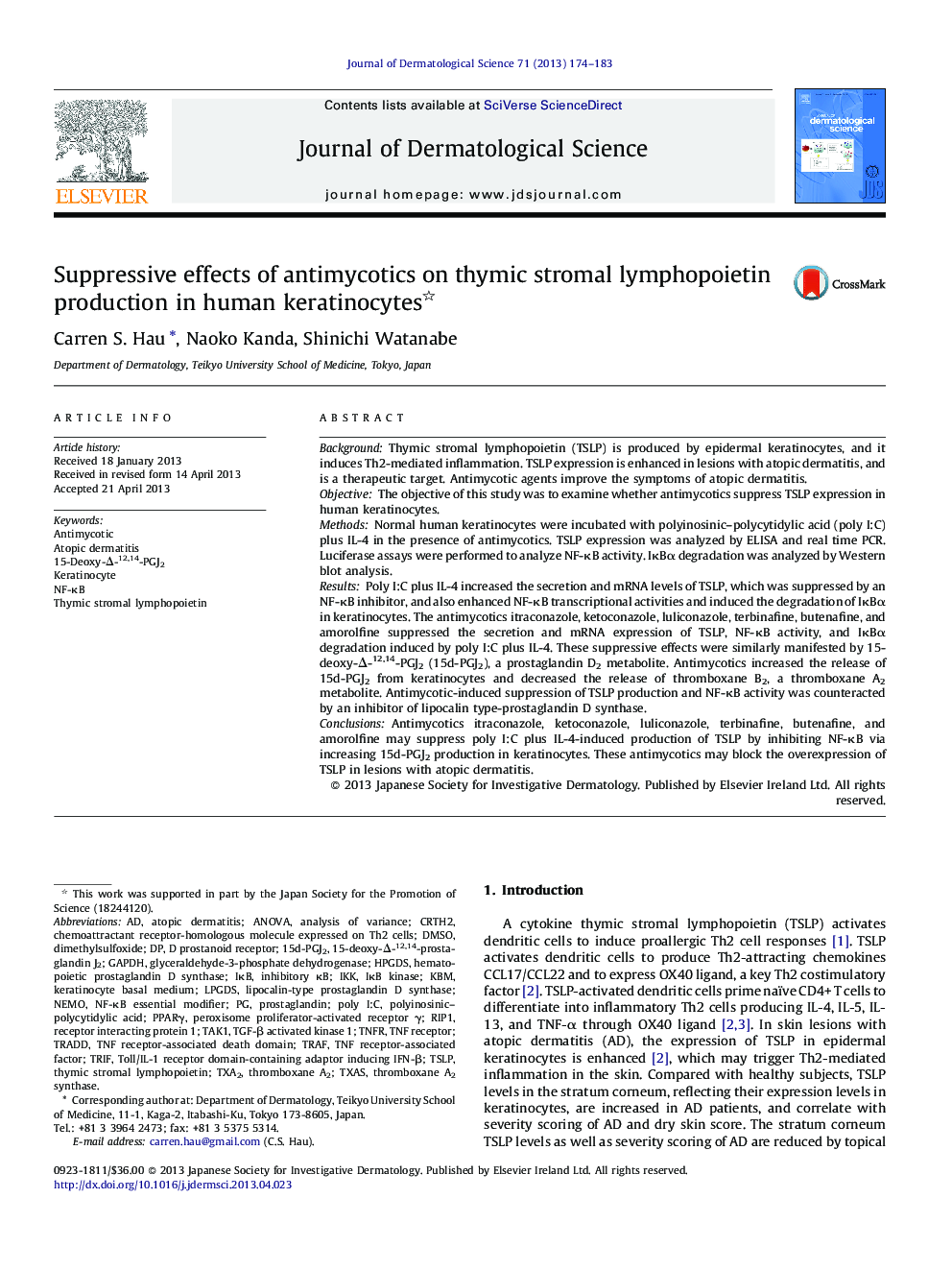| Article ID | Journal | Published Year | Pages | File Type |
|---|---|---|---|---|
| 3212855 | Journal of Dermatological Science | 2013 | 10 Pages |
BackgroundThymic stromal lymphopoietin (TSLP) is produced by epidermal keratinocytes, and it induces Th2-mediated inflammation. TSLP expression is enhanced in lesions with atopic dermatitis, and is a therapeutic target. Antimycotic agents improve the symptoms of atopic dermatitis.ObjectiveThe objective of this study was to examine whether antimycotics suppress TSLP expression in human keratinocytes.MethodsNormal human keratinocytes were incubated with polyinosinic–polycytidylic acid (poly I:C) plus IL-4 in the presence of antimycotics. TSLP expression was analyzed by ELISA and real time PCR. Luciferase assays were performed to analyze NF-κB activity. IκBα degradation was analyzed by Western blot analysis.ResultsPoly I:C plus IL-4 increased the secretion and mRNA levels of TSLP, which was suppressed by an NF-κB inhibitor, and also enhanced NF-κB transcriptional activities and induced the degradation of IκBα in keratinocytes. The antimycotics itraconazole, ketoconazole, luliconazole, terbinafine, butenafine, and amorolfine suppressed the secretion and mRNA expression of TSLP, NF-κB activity, and IκBα degradation induced by poly I:C plus IL-4. These suppressive effects were similarly manifested by 15-deoxy-Δ-12,14-PGJ2 (15d-PGJ2), a prostaglandin D2 metabolite. Antimycotics increased the release of 15d-PGJ2 from keratinocytes and decreased the release of thromboxane B2, a thromboxane A2 metabolite. Antimycotic-induced suppression of TSLP production and NF-κB activity was counteracted by an inhibitor of lipocalin type-prostaglandin D synthase.ConclusionsAntimycotics itraconazole, ketoconazole, luliconazole, terbinafine, butenafine, and amorolfine may suppress poly I:C plus IL-4-induced production of TSLP by inhibiting NF-κB via increasing 15d-PGJ2 production in keratinocytes. These antimycotics may block the overexpression of TSLP in lesions with atopic dermatitis.
